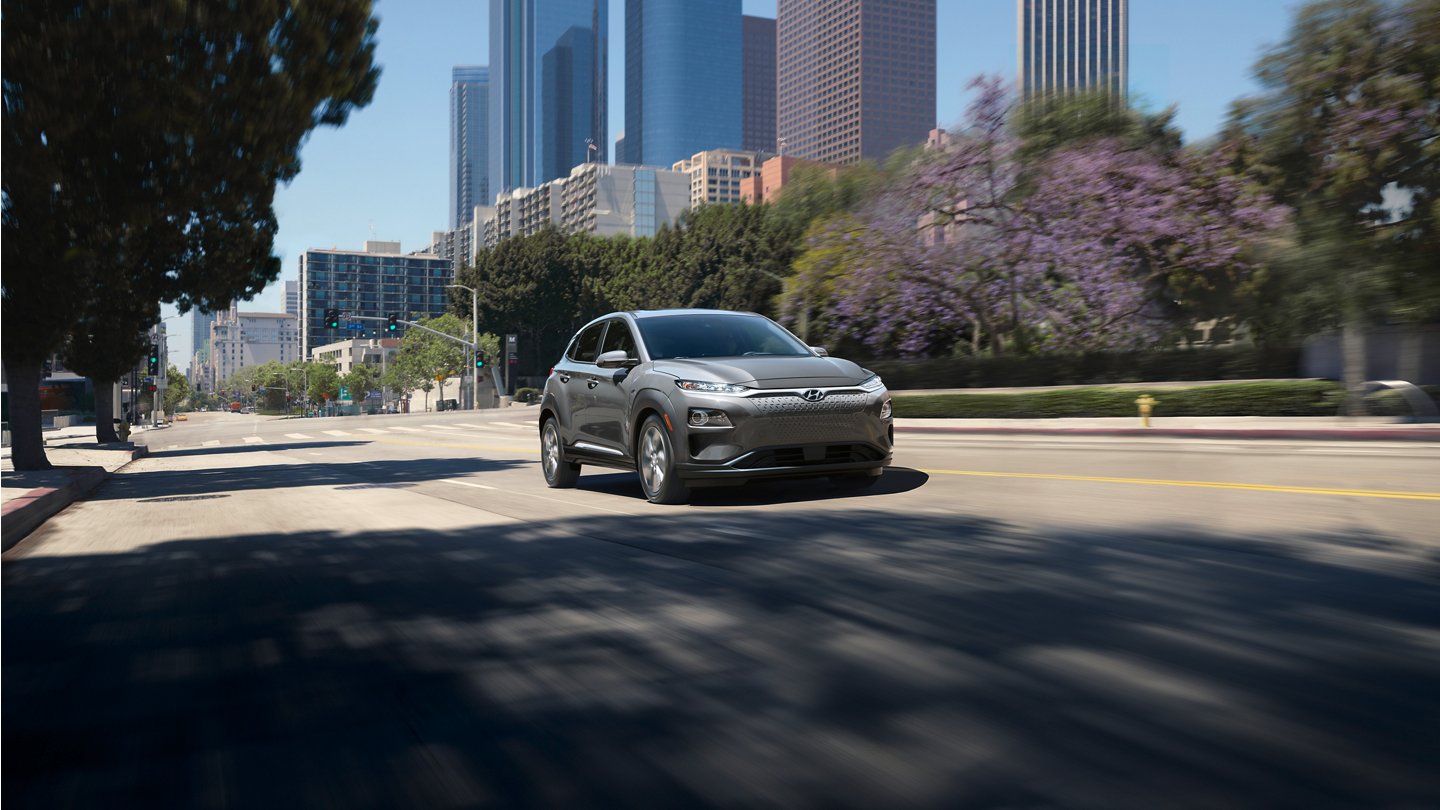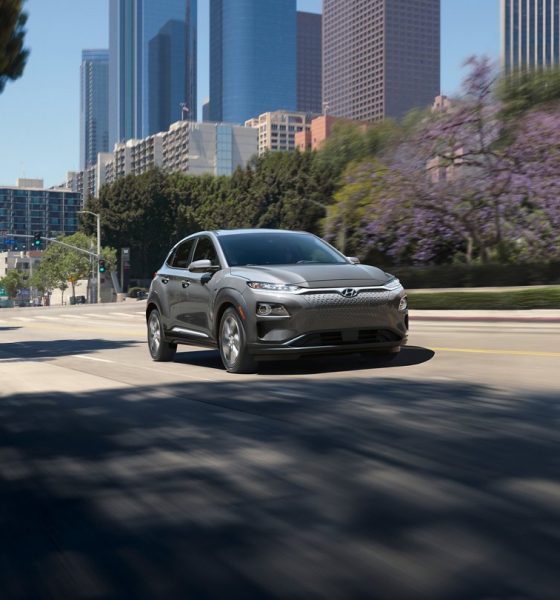

News
Hyundai Kona EV owners express discontent with recall handling after battery fires
Hyundai Kona EV owners are not happy with how the automaker is handling a recall case, expressing discontent regarding delays and poor communication. Hyundai is currently working to replace the battery systems in around 82,000 Kona EVs after 15 of them had battery pack fires. The recall is expected to cost $900 million.
While Hyundai has said that it will take care of the roughly 82,000 vehicles that match the specifications for the recall, it hasn’t conveyed a clear plan to owners of how it plans to fix the malfunctioning battery packs. Owners voiced their displeasure regarding Hyundai’s handling of the situation earlier this week.
“When I asked Hyundai’s repair center when exactly my Kona EV will be getting a battery replacement, they just told me that they would put me ahead in the line, but I haven’t received the exact date yet,” one owner said. The owners weren’t willing to give full names because of potential backlash from Hyundai and for privacy reasons.
Hyundai’s handling of the situation has made the quoted owner above rethink their purchase. They admitted that the Kona EV was one of the few electric options available on the market in 2018, but now that the market has expanded, they wouldn’t choose Hyundai again.
Hyundai commented on the complaints. The company said (via Reuters):
“Hyundai will continue striving to take necessary actions to prevent customer inconvenience from the ongoing recall.”
The company added that battery replacements would be available in South Korea beginning next week. However, several owners turned to social media to vent their frustrations, and some even filed a class-action lawsuit against the company. 173 Kona EV owners filed a complaint against the company, seeking around $7,000 each for “reduced value of their EVs and other losses.”
Mysterious Hyundai Kona EV fire currently under investigation
Industry experts are advising Hyundai to be transparent regarding the issues with its battery packs. Lee Hang-Koo, Korea Automotive Technology Institute’s Executive Advisor, said that if the issue is battery supply shortages, it should convey that to owners.
“Hyundai should be straightforward with its consumers and let them know what’s going on – whether or not battery sourcing has been difficult,” Lee told Reuters. Highlighting the increasingly competitive EV market, Lee says that Hyundai should consider how it’s treating its customers now, especially as it could have long-term effects that could be detrimental to its sales in the future. “If Hyundai falls behind on this EV race, that would be problematic. In that sense, they should review how they treat their customers.”
No injuries or fatalities have been caused by the fires so far. Hyundai offered a software update in October 2020 that would combat the issue. However, this caused some owners to experience a reduced charging capacity, and one owner said it has caused several other issues. The owner indicated that he had been refused service at a public charging station because of the fires. “These recalls already have already wasted my time, and I have to charge my car worrying about fire risks. On top of that, I have to worry about what other people think about my car,” he said.

News
Tesla FSD fleet is nearing 7 billion total miles, including 2.5 billion city miles
As can be seen on Tesla’s official FSD webpage, vehicles equipped with the system have now navigated over 6.99 billion miles.

Tesla’s Full Self-Driving (Supervised) fleet is closing in on almost 7 billion total miles driven, as per data posted by the company on its official FSD webpage.
These figures hint at the massive scale of data fueling Tesla’s rapid FSD improvements, which have been quite notable as of late.
FSD mileage milestones
As can be seen on Tesla’s official FSD webpage, vehicles equipped with the system have now navigated over 6.99 billion miles. Tesla owner and avid FSD tester Whole Mars Catalog also shared a screenshot indicating that from the nearly 7 billion miles traveled by the FSD fleet, more than 2.5 billion miles were driven inside cities.
City miles are particularly valuable for complex urban scenarios like unprotected turns, pedestrian interactions, and traffic lights. This is also the difference-maker for FSD, as only complex solutions, such as Waymo’s self-driving taxis, operate similarly on inner-city streets. And even then, incidents such as the San Francisco blackouts have proven challenging for sensor-rich vehicles like Waymos.
Tesla’s data edge
Tesla has a number of advantages in the autonomous vehicle sector, one of which is the size of its fleet and the number of vehicles training FSD on real-world roads. Tesla’s nearly 7 billion FSD miles then allow the company to roll out updates that make its vehicles behave like they are being driven by experienced drivers, even if they are operating on their own.
So notable are Tesla’s improvements to FSD that NVIDIA Director of Robotics Jim Fan, after experiencing FSD v14, noted that the system is the first AI that passes what he described as a “Physical Turing Test.”
“Despite knowing exactly how robot learning works, I still find it magical watching the steering wheel turn by itself. First it feels surreal, next it becomes routine. Then, like the smartphone, taking it away actively hurts. This is how humanity gets rewired and glued to god-like technologies,” Fan wrote in a post on X.
News
Tesla starts showing how FSD will change lives in Europe
Local officials tested the system on narrow country roads and were impressed by FSD’s smooth, human-like driving, with some calling the service a game-changer for everyday life in areas that are far from urban centers.

Tesla has launched Europe’s first public shuttle service using Full Self-Driving (Supervised) in the rural Eifelkreis Bitburg-Prüm region of Germany, demonstrating how the technology can restore independence and mobility for people who struggle with limited transport options.
Local officials tested the system on narrow country roads and were impressed by FSD’s smooth, human-like driving, with some calling the service a game-changer for everyday life in areas that are far from urban centers.
Officials see real impact on rural residents
Arzfeld Mayor Johannes Kuhl and District Administrator Andreas Kruppert personally tested the Tesla shuttle service. This allowed them to see just how well FSD navigated winding lanes and rural roads confidently. Kruppert said, “Autonomous driving sounds like science fiction to many, but we simply see here that it works totally well in rural regions too.” Kuhl, for his part, also noted that FSD “feels like a very experienced driver.”
The pilot complements the area’s “Citizen Bus” program, which provides on-demand rides for elderly residents who can no longer drive themselves. Tesla Europe shared a video of a demonstration of the service, highlighting how FSD gives people their freedom back, even in places where public transport is not as prevalent.
What the Ministry for Economic Affairs and Transport says
Rhineland-Palatinate’s Minister Daniela Schmitt supported the project, praising the collaboration that made this “first of its kind in Europe” possible. As per the ministry, the rural rollout for the service shows FSD’s potential beyond major cities, and it delivers tangible benefits like grocery runs, doctor visits, and social connections for isolated residents.
“Reliable and flexible mobility is especially vital in rural areas. With the launch of a shuttle service using self-driving vehicles (FSD supervised) by Tesla in the Eifelkreis Bitburg-Prüm, an innovative pilot project is now getting underway that complements local community bus services. It is the first project of its kind in Europe.
“The result is a real gain for rural mobility: greater accessibility, more flexibility and tangible benefits for everyday life. A strong signal for innovation, cooperation and future-oriented mobility beyond urban centers,” the ministry wrote in a LinkedIn post.
News
Tesla China quietly posts Robotaxi-related job listing
Tesla China is currently seeking a Low Voltage Electrical Engineer to work on circuit board design for the company’s autonomous vehicles.

Tesla has posted a new job listing in Shanghai explicitly tied to its Robotaxi program, fueling speculation that the company is preparing to launch its dedicated autonomous ride-hailing service in China.
As noted in the listing, Tesla China is currently seeking a Low Voltage Electrical Engineer to work on circuit board design for the company’s autonomous vehicles.
Robotaxi-specific role
The listing, which was shared on social media platform X by industry watcher @tslaming, suggested that Tesla China is looking to fill the role urgently. The job listing itself specifically mentions that the person hired for the role will be working on the Low Voltage Hardware team, which would design the circuit boards that would serve as the nervous system of the Robotaxi.
Key tasks for the role, as indicated in the job listing, include collaboration with PCB layout, firmware, mechanical, program management, and validation teams, among other responsibilities. The role is based in Shanghai.
China Robotaxi launch
China represents a massive potential market for robotaxis, with its dense urban centers and supportive policies in select cities. Tesla has limited permission to roll out FSD in the country, though despite this, its vehicles have been hailed as among the best in the market when it comes to autonomous features. So far, at least, it appears that China supports Tesla’s FSD and Robotaxi rollout.
This was hinted at in November, when Tesla brought the Cybercab to the 8th China International Import Expo (CIIE) in Shanghai, marking the first time that the autonomous two-seater was brought to the Asia-Pacific region. The vehicle, despite not having a release date in China, received a significant amount of interest among the event’s attendees.








